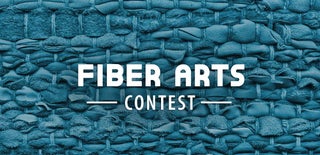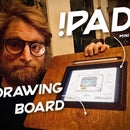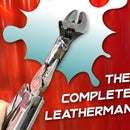Introduction: Stowage Bag for Kajsa the Space Dog
Two years after Niel Armstrong died, his wife Carol found a bag tucked way back in the closet. She knew immediately that this would have public interest and contacted NASA. The bag was full of artifacts from the Apollo 11 mission but the bag itself has become a popular icon of the Apollo program. The stowage bag was never meant to return to earth but miraculously did anyway. I was first made aware of this bag from Adam Savage reproduction of it back in 2017. Mr. Savage and Mafia bags made the EDC One followed by the EDC Two, a smaller version of EDC One. https://adamsavage.com/collections/bags/products/...
Last year I went down a rabbit hole in the middle of the 50 year anniversary of the Apollo 11 moon landing. I made an audiovisual installation for the day of the landing and I participated in Karoline Hinz spacesuit challenge through Instagram where I made a spacesuit for our Yorkshire Terrier Kajsa!
The dog spacesuit has been on the road for a few months and I've had no real storage for it until now! I enjoyed sewing the spacesuit so much I needed another project to get back at the needle machine. So Niel's stowage bag would fit the purpose perfectly.
Supplies
Supplies in no particular order:
- Thick rugged canvas
- Nylon bands for handles
- Velcro
- Wire
- Soft acrylic material
- Hooks and connectors
- Jeans needles
- Thread according to the design choices
Step 1: The Sketch…
From reference footage and inspirational images, I've made some simple sketches to get a visual direction. The main take away is the rounded top and the zipper vs round window design. For anyone interested in replicating artifacts from the Apollo program, NASA has a historic site with tons of images for accurate references or use it inspirationally like me, https://history.nasa.gov/alsj/a11/a11ReturnedEagl...
Step 2: All About the Base
The base is made out of wood, this is to make the contents have a sturdy bottom and protection from bumps and crashes. Making this wooden frame gave a clear form factor and guide to measuring and cutting the fabric. So as this was a leftover box project I lucky the size was perfect and fitt the spacesuit spot on. I made a cut around the rim with the table saw for the velcro to fit snuggly.
Step 3: Canvas
Before cutting into my precious canvas I did some test cuttings in a paper-like fabric, cheap and simple to mold to shape. I used these test cuttings as templates for my final cuts in the canvas. Since both sides were equal in size and shape I could just mirror the same piece and have exact measurements. It's always daunting to make that first cut and from my measuring, I knew I only had exactly the right amount of fabric. The two sides are one piece of canvas each, cutting only half circles in to make the rounded top. All sides are folded and sewn in place. The fold where the two sides meet is folded with an extra gap for the wire to slide in and stiffen the shape of the bag.
Step 4: Wire It Shut…
Instead of using a zipper, I had the idea that a wire could be used as a closing mechanism and also keep the bag in a specific shape, upright. The wire I chose was hard enough to keep stiff but soft enough for bending the outer lining. Rounded pliers gave me an easy way to fix the threading hole I needed for attachment to the bottom part of the bag. It was important to shield the canvas from rubbing against the wire.
Step 5: A Window Into Space
Since the apollo astronauts never got their moon capsules fitted with large rounded windows I could do that on my bag. Their concern was quality and weight, mine was needle strength. My vintage Husqvarna had no trouble punching through the thick but soft acrylic. Since the canvas could easily split in its cuts I had to sew a band around the outer part. I attached the "window" first with glue to make sure it wouldn't wander and then zigzag stitches. I was quite happy with the result:-)
Step 6: Let There Be Light or One More Thing…
Adding quirky ideas to my builds has become a finishing touch and something I really enjoy doing. If it's going to make people ask "but why?", I'm all in. This time I thought a led strip would be fun and add some drama to the interior of the bag. I needed to have a switch for turning it on/off from the outside. 3D print to the rescue! In Fusion 360 I built a canister that would fit a small switch. It was locked in with a threaded cap. For wiring, I used an audio cable and connected the female jack to a 9 volts battery fastened with a large rubber band and velcro. Now I can't stop switching the light on and off and on and off and…
Step 7: Details…
The handles are pulled underneath and held in place with velcro. The locks are attached to a single band that goes all the way up to the top of the bag. You can stick them together with a small velcro patch. On the bottom, there are two rails protecting the band.
An very important for anyone wondering if the bag contains a space dog or not I've included a slider to answer their worries. Kajsa's name tag is stuck to the velcro at the top of the bag.
I also included a small detachable pouch for three pens and a small notebook. Making the template was not an immediate success and only with some goodwill on my part was I able to finish it off.
Step 8: Assembly Time
Putting it all together is no biggie, all you need to make sure of is how the sides will overlap. One goes below the other and the light switch attachment should at the side of the battery.
As a small perk for my self, I've made 3D printed replicas of the tether and carabiners found inside Niel's stowage bag. Buzz used his on the moon and had them attached to the LM for exiting and reentering the lunar module. As far as I know, they are still hanging on the side of the LM.
Step 9: Final Touches
It's only when I've got the stamps and the stencils and stickers out that I see the project nearing its end. For this bag drawing the NASA worm logo meant a great deal. Adding these details also has another great advantage, my sewing skills do not get all the attention and the more there is to see the more mistakes are buried:-)
I love sewing and will soon embark on a new mission, what will it be… I have a long list!
If you want to follow along you are most welcome over at https://www.instagram.com/smogdog

Participated in the
Fiber Arts Contest











